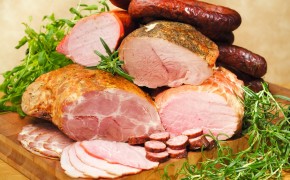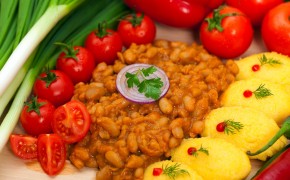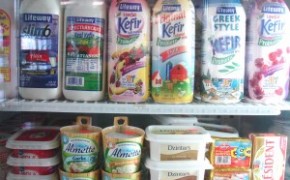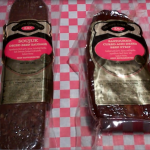The days when European bread could only be enjoyed in Europe are long gone.
These days, the export of European bread to elsewhere in the world is pretty big business, and the popularity of European style bread is rapidly increasing in bakeries outside of Europe.
It has to be said that there are few smells like that of freshly baked bread to make the mouth water, and the bakeries which are found in abundance througout Europe certainly don’t disappoint.
If you ever have the oppportunity to travel to Europe, you’ll be spoilt for choice when it comes to European bread – bread rolls as soft as pillows, tangy sourdough bread with its characteristically crispy, chewy crust, sweet breads filled with nuts and fruit and glazed with sugar syrup – I guarantee you won’t be disappointed!
Here’s the lowdown on some of the breads you’ll find across the water in two countries renowned for their extensive varieties – Germany and Switzerland.
German Style Bread
Germany boasts the largest selection of breads of any country in the world. As well as around 600 types of bread, bakers will often put their own twist on a basic recipe, creating a new variety to add to the ever growing range. As well as German style breads, numerous different types of bread rolls and sweet pastries are items which are commonly found in German bakeries.
Germans takes their bread making pretty seriously. Bread, or Brot, is an important part of German cuisine, and throughout Germany, there are approximately 17,000 specialist bakeries, and 10,000 stores with in-store bakeries, all producing bread on a daily basis to meet customer demand.
Quite apart from the type of white bread which we are familiar with, Germany boasts a whole other range of breads, many of which are probably not so recognizable to us. There are too many varieties to mention them all individually, but here are some of the most popular;
Kürbiskernbrot – Dark rye bread with pumpkin seeds
Zwiebelbrot – Light wheat-rye bread with toasted onions
Vollkornbrot – Whole-grain
Mehrkornbrot – Multi-grain, usually a combinatin of wheat, rye and oats with linsee or sesame seed
Roggenbrot – Rye bread
Sonnenblumenkernbrot – Sunflower seeds in dark rye bread
Pumpernickel – Heavy, slightly sweet rye bread
Weißbrot – White bread
Toastbrot – Toast bread
Doppelweck – Double roll bread
Mohnbrötchen – Sweet poppy seed roll
Ulmer Zuckerbrot – Ulm sugar bread, a yeast bun with sugar, rose oil and fennel seeds
So passionate are the Germans about their bread that they will often eat it at every meal.
In a German household, bread almost always features at breakfast, and it’s usually white bread (Weißbrot or Toastbrot), or rolls which are favored at this meal.
Later in the day, open sandwiches made of dark, rye bread are popular, as are snacks such as Brotzeit, Pausenbrot, Butterbrot, and Stullen.
In the evening, Abendbrot (literally translated at Evening Bread) is typically served on the table.
German style bread is more varied than that found in other areas in Europe, and they will bake bread using pretty much every possible grain there is to bake with, for example; rye, wheat, barley, oats, spelt, corn, millet, bran and rice. German style bread made with flour derived from potato starch is also very popular, and very delicious.
Whilst on the subject of German style bread, I should also mention Bavarian bread.
Bavaria is a state of Germany, located in the southeast of the country and it’s fair to say that many of the dishes you’ll find there are shared with Germany.
In fact, much of the Bavarian bread is exactly the same as that which is found in Germany, although many Bavarian bakers have adapted the ingredients here and there to create their own varieties, with some of the more popular variations containing light, medium or dark rye, with the addition of caraway, sunflower or poppy seeds.
Here are a few more types of Bavarian bread;
Bauern Brot (Farmers bread) is a popular bread in Bavaria. Similar to other breads, it contains flour, yeast, salt and water, but unlike many others, it also contains milk. This bread traditionally features a distinctive ‘criss-cross’ pattern in the top crust.
Loaves made from whole grain rye and whole grain wheat are also popular types of Bavarian bread. Most typically shaped into a long or round loaf and dusted with flour, these crusty loaves can be found all over the state.
Bavarian style dark rye bread has a dense, but moist and chewy texture, and a slightly nutty taste.
Pretzels, which have been traditionally baked in Germany for hundreds of years, are an incredibly popular bakery item in Bavaria. Both hard and soft varieties, sweet with sugar or savory with salt and caraway seeds, can be found almost everywhere.
Swiss Bread
Switzerland certainly has its fair share of breads, claiming around 300 different varieties, and in addition to those, special variations are baked for family and celebratory events, carnivals and religious holidays.
Breadmaking in Switzerland is very much a matter of local concern, with every region throughout Switzerland having its own special bread. This is due, in equal parts, to;
The local tastes
The local traditions, and
The type of grains which are found growing in the region
In times gone by, regional breads remained very much within their own regions. These days however, breads from every territory in Switzerland can now be found all over the country, although as a general rule, Swiss Germans have a tendency to steer towards the saltier, richer and darker breads than their Swiss French and Swiss Italian neighbors, who prefer the lighter, less intensely flavored varieties.
Here are some of the varieties of Swiss bread you’ll come across in regional bakeries;
Zurich : The Zurich loaf is an oval bread with slashes across the top of a golden brown crust. Very popular throughout the whole of Switzerland.
Graubünden : Brascidela or Bracciadell is the bread of this region. Made of rye and wheat four, these loaves are ring-shape, which as tradition dictates, makes it easy to hang them up to dry after baking.
Jura : A round, flattish loaf which is popular in the French-speaking regions. Decorated with the symbols of Switzerland’s youngest region, the Jura features a bishop’s crozier in one half and stripes in the other half.
Ticino : The loaf of this region is made up of smaller loaves ‘stuck’ together, which can be easily broken off as individual pieces when the bread has been baked. The loaf is baked this way because traditionally, it was considered insulting to the baker, and to the bread, to use a knife to cut it. This Swiss bread contains white flour and vegetable oil.
Valais : A close-textured rye bread, round and flat in shape with a cracked top crust and an intense flavor. Rye is used for this local bread, as it is the only cereal suited to the cold and dry climate of the region.
Vaud : A round loaf, which has the shape of a cross cut into the top crust. This allows the baked bread to be easily broken into quarters.
Two other important type of Swiss bread are Zopf and Bürli.
Zopf is a braid-shaped bread which is considered a real treat throughout the whole of Switzerland, and is served on Sundays and on special occasions such as birthdays, weddings, baptisms and other family gatherings.
Bürli is the name given to a small loaf of bread made of white flour, yeast and salt, which is fashioned from two rolls joined together, and baked it has a very crisp, brown, chewy crust.
Conclusion
There are, of course, numerous other types of European bread.
France, Italy, Spain, Denmark, Sweden, Poland, Russia and Greece are just some of the other European countries in which bread is highly regarded, and considered an essential grocery item.
There are so many different ways to enjoy bread across Europe – in Spain, dip chunks of bread into olive oil and vinegar, in France, dunk a warm, crusty baguette into a cup of creamy hot chocolate, in Sweden, savor a wonderfully spiced cinammon and cardomom bun with a steaming cup of coffee and in Ireland, spread a thickly cut slice of warm soda bread with butter.
These are pretty simple ways to try bread, but good bread doesn’t need anything fancy to make it taste great – the quality speaks for itself.
It’s true to say that European bread is amongst some of the best in the world, but if you can’t get over there to try it in person, check out local stores for imported breads, or local bakeries for European style versions.
Enjoy!




